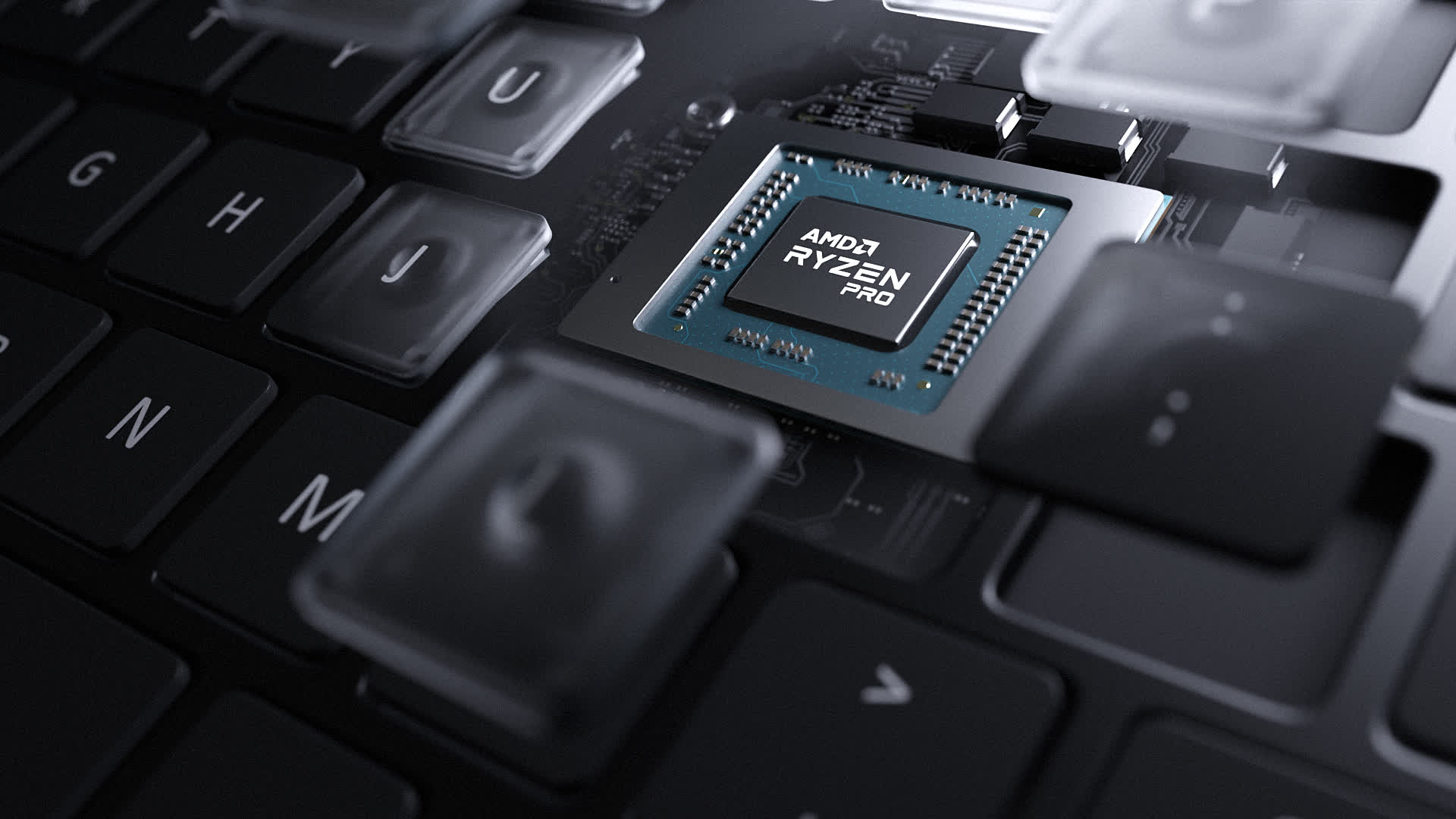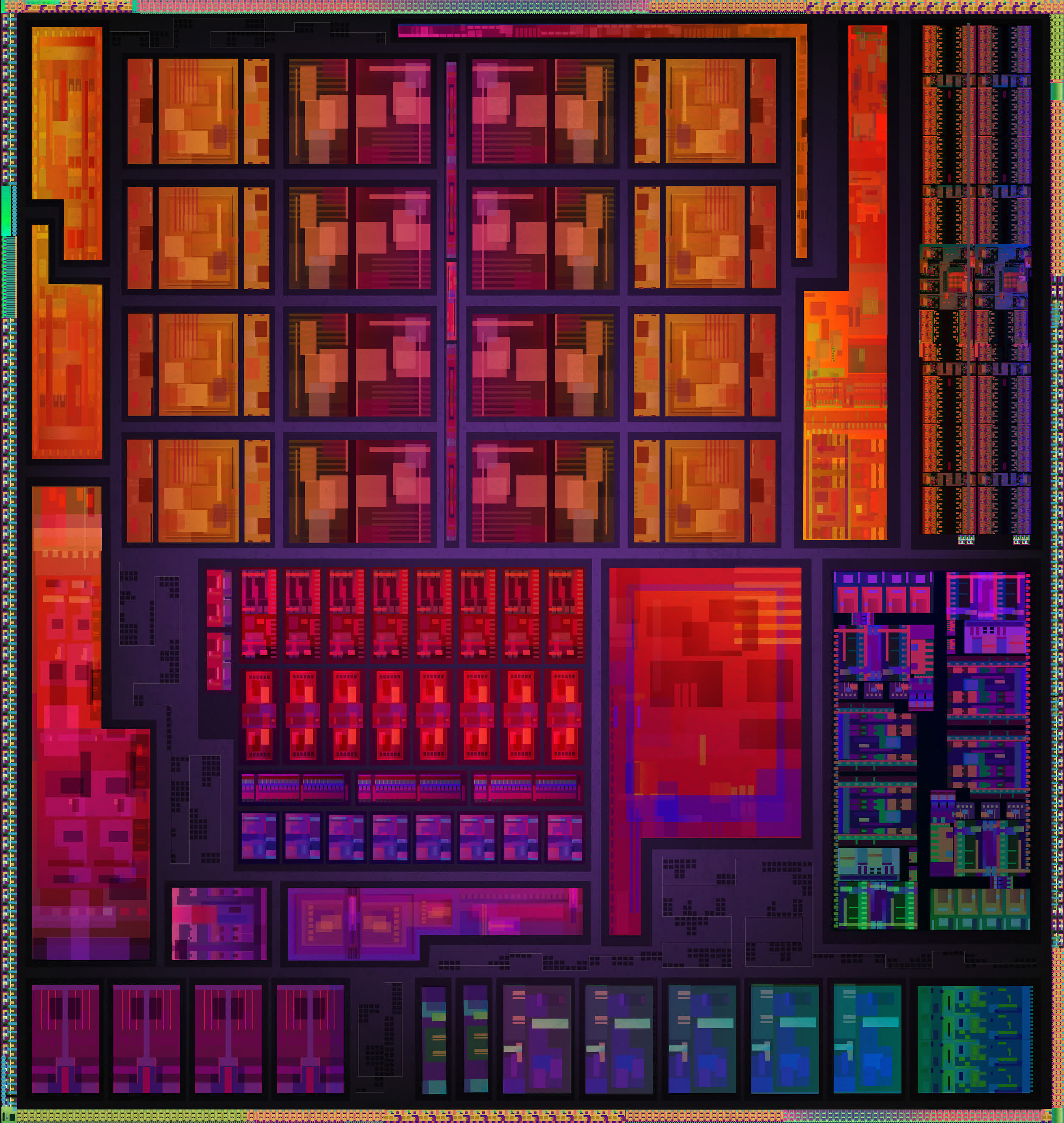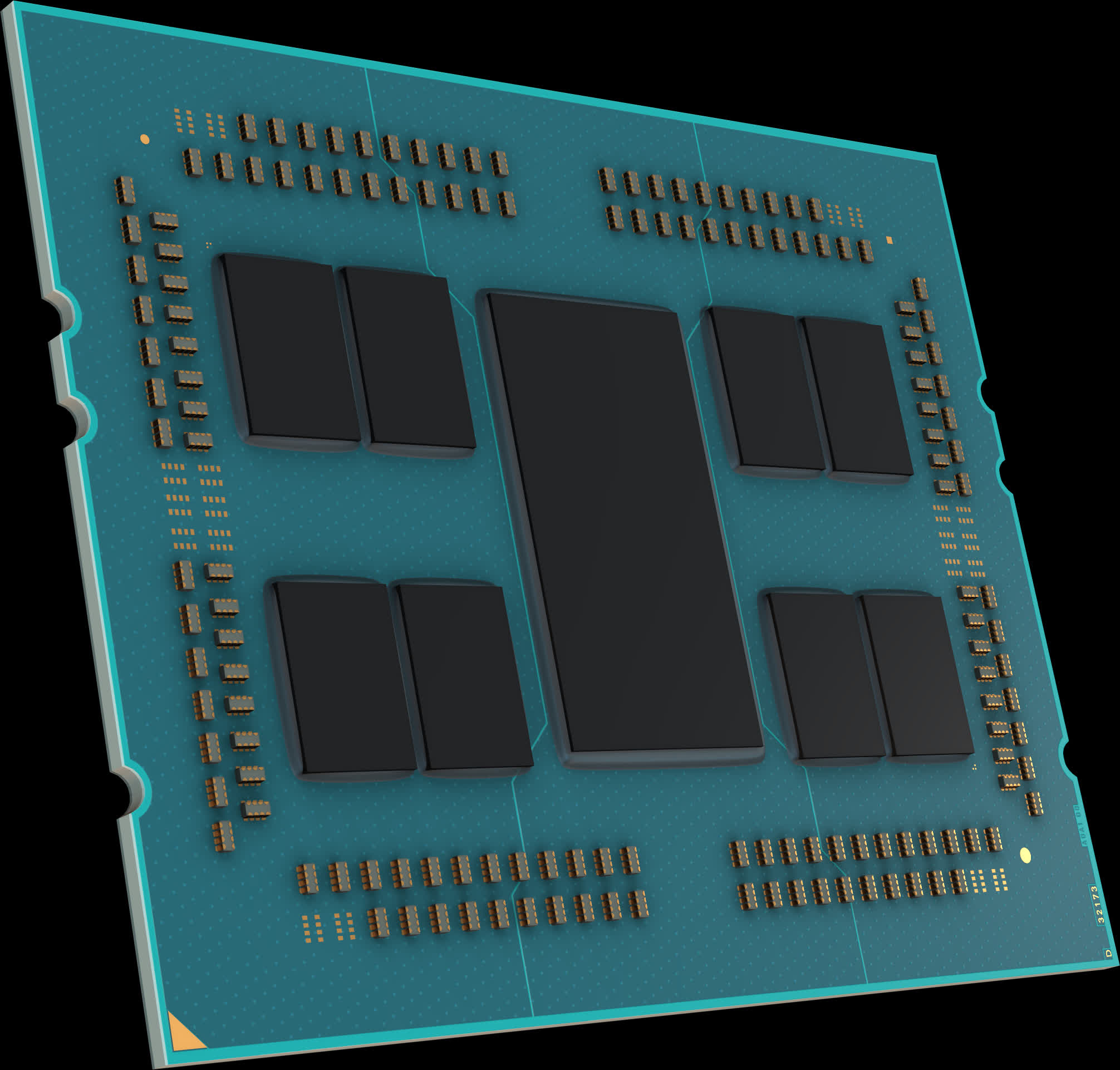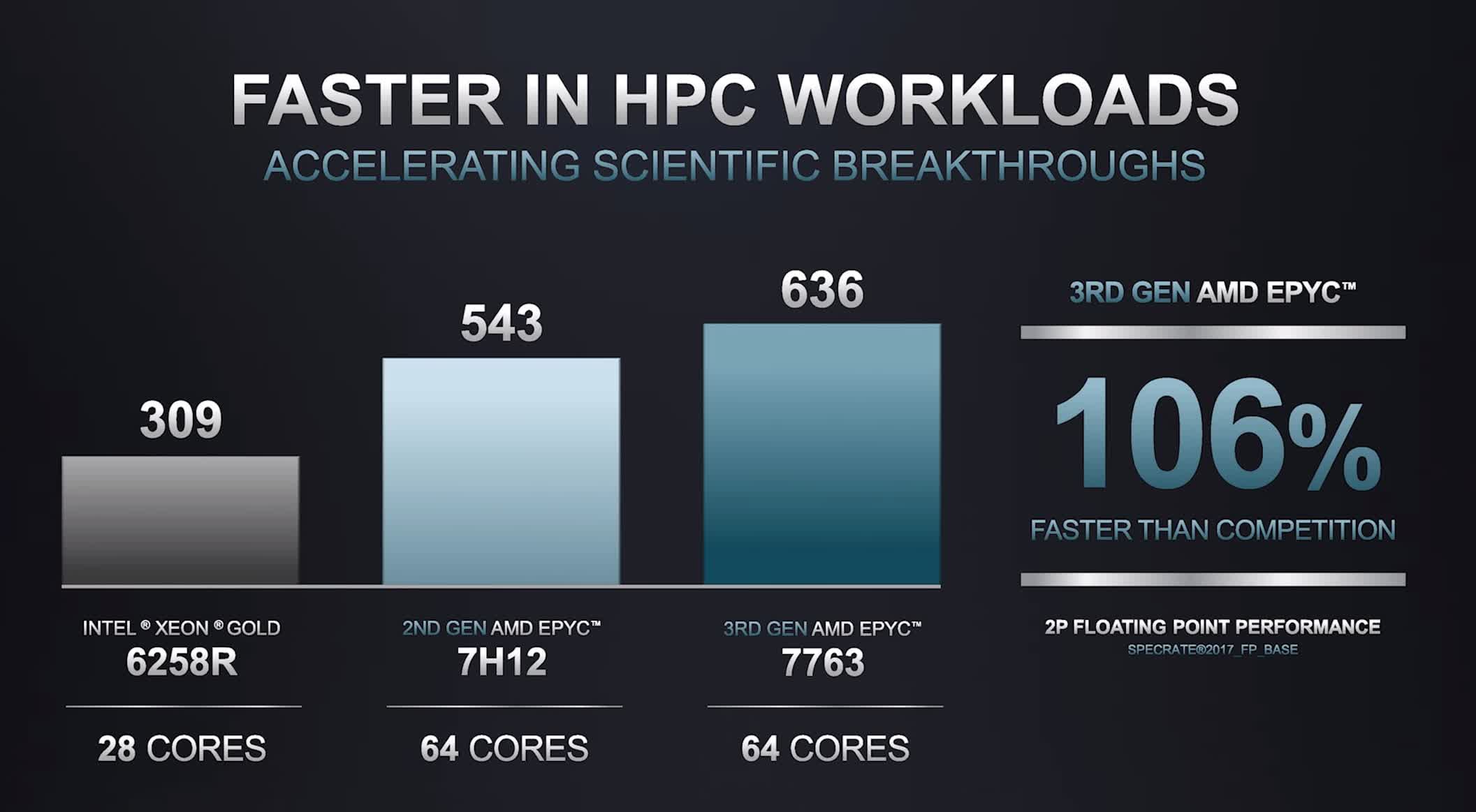The big picture: Chipmaker AMD is on a roll, particularly for consumer-focused products. Not only are its Ryzen 5000 processors now the fastest CPUs you can buy for consumer PCs, its Radeon RX 6000 GPUs are giving market leader Nvidia a run for their money on the performance side. Oh yeah, and let’s not forget that AMD is also powering two of the most highly sought-after tech gadgets currently available (or more likely, still “unavailable” for many eager to purchase them): the Sony PlayStation 5 and Microsoft Xbox Series X. Unbeknownst to many, however, AMD has been building up its business-focused offerings as well.

Rarely has this been more evident than with the back-to-back launches of its latest 3rd-gen Epyc server CPUs and its Ryzen Pro 5000 series mobile processors for enterprise notebooks.
Both the Epyc 7003 family of chips (codenamed “Milan”) and Ryzen Pro 5000 mobile processors (like consumer versions, codenamed “Cezanne”) are based on the company’s Zen 3 core architecture—a 7nm design that continues the impressive performance path that the company began with the original Zen cores that debuted in 2017.
While each of the new chips is optimized for their very different needs and applications, they do share a number of enhancements that are at the heart of Zen 3 cores, including larger, unified caches for faster processing with larger data sets—as many AI-focused workloads on both servers and PCs require.

Cezanne Detailed Die Shot
Zen 3 lets all eight of the available CPUs in each core complex access the full amount of L2 cache (32 MB for Epyc and 16 MB for Ryzen Pro, both of which are twice the size of their predecessors). This is a significant enhancement over Zen 2 designs, which had groups of four cores that were each able to access 16 MB or 8 MB, respectively. This new architecture makes it easier for multi-threaded applications capable of simultaneously using all cores to fully leverage the cache, resulting in significantly improved performance for these types of programs. Again, that’s something that’s very useful in both servers and notebooks, but for entirely different types of applications.
In addition to performance enhancements—including a 19% improvement in the critical Instructions Per Clock (IPC) metric on the Zen 3 cores found in both chips—AMD added several hardware-based security improvements, which are becoming increasingly important for businesses of all sizes. Both the Epyc 7003 and the Ryzen 5000 Pro offer Shadow Stack, for example, which is designed to deter hardware-focused malware attacks, such as Spectre, Meltdown and other memory location-focused threats.

AMD Epyc 7003 Series Processor
For the Epyc 7003, the company also added a suite of security features it calls Infinity Guard that includes support for securing virtual machines and hypervisors, through Secure Encrypted Virtualization-Encrypted State (SEV-ES) and Secure Nested Paging (SEV-SNP). These capabilities are a big reason why Microsoft announced that it would now be offering Confidential Computing-focused VMs in Azure that leverage these third generation Epyc parts.
On the notebook side, the Ryzen Pro 5000 series CPUs add support for Microsoft’s Secured Core PC initiatives as well as FIPS 140-3 level encryption certification. Together, these new security features represent a portion of what the company describes as a multi-layered security model.
For the enterprise data center and cloud computing world, the Epyc 7003 series builds on the impressive performance and TCO (Total Cost of Ownership) metrics that AMD first set with its second generation Epyc line back in 2019. The company is claiming its “Milan” CPUs offer significant performance leadership on key workloads for cloud computing, enterprise data centers, and HPC (high performance computing—I.e., supercomputers).
In fact, the company even cited comparative benchmarks that it says show how a single socket Epyc 7003-based server can outperform many two socket Intel Xeon-powered solutions on certain workloads, with correspondingly lower energy consumption (and a significantly lower purchase price). In another example, AMD cited the ability to run more than double the number of active virtual desktop sessions on an Epyc 7763-based server versus a comparatively configured offering with an Intel Xeon 6258R CPU.

AMD also announced an impressive arrange of new partnerships, including new 3rd generation Epyc-based cloud computing instances from Amazon AWS, Microsoft Azure, Google Cloud, IBM Cloud, Oracle Cloud, Tencent Cloud and Alibaba Cloud, along with new servers from Dell, HPE, Cisco, Lenovo, SuperMicro and many more.
For Ryzen Pro 5000, AMD had big name launch-day partners, including several different notebook designs from HP, Lenovo, and others. The company also cited its rapid increase in both market share and design wins (though, admittedly, from a small base in commercial notebooks). As with the Epyc line, AMD is claiming significant performance wins for the Ryzen Pro 5000 line versus Intel’s latest business notebook offerings, particularly on content creation applications and workloads, such as video encoding and working with Adobe’s Creative Cloud suite of tools. The company was also quick to point out significant improvements in battery life versus previous generation Ryzen mobile designs, as it did with the consumer-focused Ryzen 5000 series that it debuted during CES in January of this year.
Unlike those CPUs, however, the Ryzen Pro line also has a strong focus on manageability features, for IT departments, as well as image stability, to ensure that companies can have a stable, consistent software image and set of drivers on systems that pass their validation tests.
All told, the two days of business-focused CPU debuts offered a good opportunity to shine the spotlight on increasingly important, albeit lesser-known, parts of AMD’s business. Despite its strength in the consumer market, the company still has a long way to go to win over business computing buyers of all types. As these new Zen 3-based Ryzen and Epyc offerings highlight, however, the benefits of strong competition have never been clearer.
Bob O’Donnell is the founder and chief analyst of TECHnalysis Research, LLC a technology consulting firm that provides strategic consulting and market research services to the technology industry and professional financial community. You can follow him on Twitter @bobodtech.
https://www.techspot.com/news/88941-amd-means-business-latest-epyc-ryzen-pro-cpu.html